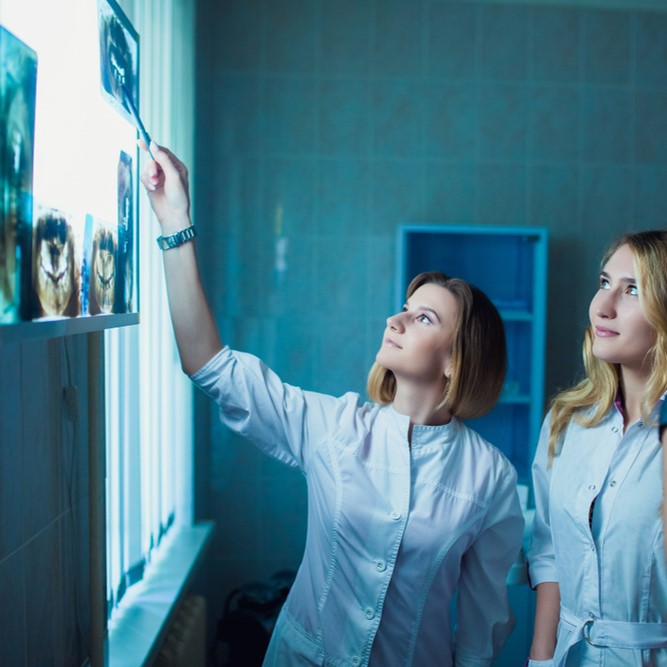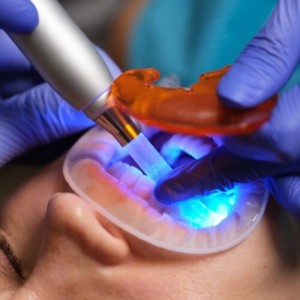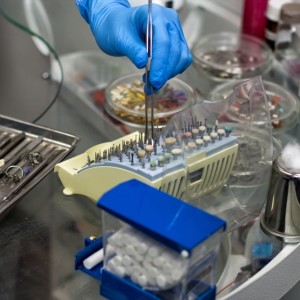
Presurgical Orthodontics versus No Presurgical Orthodontics: Treatment Outcome of Surgical-Orthodontic Correction for Skeletal Class III Open Bite
Background
It has long been claimed that presurgical orthodontics is crucial to the outcome of surgical-orthodontic treatment for dentofacial deformity. However, in the literature, the effect of presurgical orthodontics on the treatment outcome remains controversial. The purpose of the study was therefore to investigate the effect of presurgical orthodontics on the treatment outcome in terms of facial aesthetics, occlusion, stability, and efficiency.
Methods
Thirty-three adult patients with skeletal class III open bite corrected by Le Fort I posterior impaction and bilateral sagittal split osteotomy were included. The patients were divided into two groups: 13 received presurgical orthodontics, and 20 did not. Cephalometric radiographs and study models were used to evaluate the treatment outcome.
Results
There were no between-group differences in facial aesthetics, overbite, or Peer Assessment Rating score. Overjet was larger in the no–presurgical orthodontics group than in the presurgical orthodontics group, but both were within normal limits. Both groups had similar maxillary and horizontal mandibular stability. Although the vertical mandibular stability was worse in the no–presurgical orthodontics group than in the presurgical orthodontics group, the direction of instability was favorable for open bite correction. Finally, longer treatment time was required in the presurgical orthodontics group compared with the no–presurgical orthodontics group (512 ± 103 days versus 342 ± 127 days; p < 0.001).
Conclusions
The results suggest that in surgical-orthodontic correction of skeletal class III open bite, presurgical orthodontics has no clinically significant effects on facial aesthetics, occlusion, or stability. However, presurgical orthodontics has a significant adverse effect on efficiency. Patients receiving presurgical orthodontics undergo longer treatment time than those receiving no presurgical orthodontics.
Authors: Liao, Yu-Fang; Chiu, Yu-Ting; Huang, Chiung-Shing; Ko, Ellen Wen-Ching; Chen, Yu-Ray
Source: https://journals.lww.com/
 Tag
Tag
 Related articles
Related articles
Orthodontics 08 October 2025
The field of orthodontics in its new era is venturing ahead to more up-to-date technological point of view.
Orthodontics 25 August 2025
Orthodontics 25 June 2025
Clinical application of magnets in orthodontics and biological implications: a review
Over the last decade magnets have been used in orthodontic and dentofacial orthopaedics and attempts have been made to evaluate the biological implications of magnets and magnetic fields during...
The use of 3D technology in orthodontics has increased recent years. 3D intra-oral scanning, cone beam computed tomography (CBCT), 3D printing and computer-aided design and computer-aided...
News 01 May 2025
Medit, a global leader in digital dentistry solutions, and Graphy, a leading innovator in 3D printing dental materials, have officially announced a strategic partnership.
 Read more
Read more
Editorials 10 October 2025
With proud smiles and crisp white coats, ninety-three learners from the DDS Class of 2029 and the International Dentist Pathway Class of 2028 marked the start of their dental careers at the UCSF...
Periodontology 10 October 2025
Continuous professional development (CPD) in Periodontology refers to the overall framework of opportunities that facilitate a life-long learning practice, driven by the learner-practitioner and...
TheraBreath, the #1 alcohol-free mouthwash brand in the U.S.*, has introduced a new line of dentist-formulated, clinically tested toothpastes designed to support professional oral care...
News 10 October 2025
New officers and trustees were installed at the Minnesota Dental Association’s Leadership Conference on September 19 in Minneapolis.
News 10 October 2025
Smartee Denti-Technology today announced that Professor Gang Shen, its Chief Scientist and Executive President of TaiKang ByBo Dental, has once again been named to the World’s Top 2% Scientists...















